Burberry explores Henry Moore’s vision of the body at Makers House
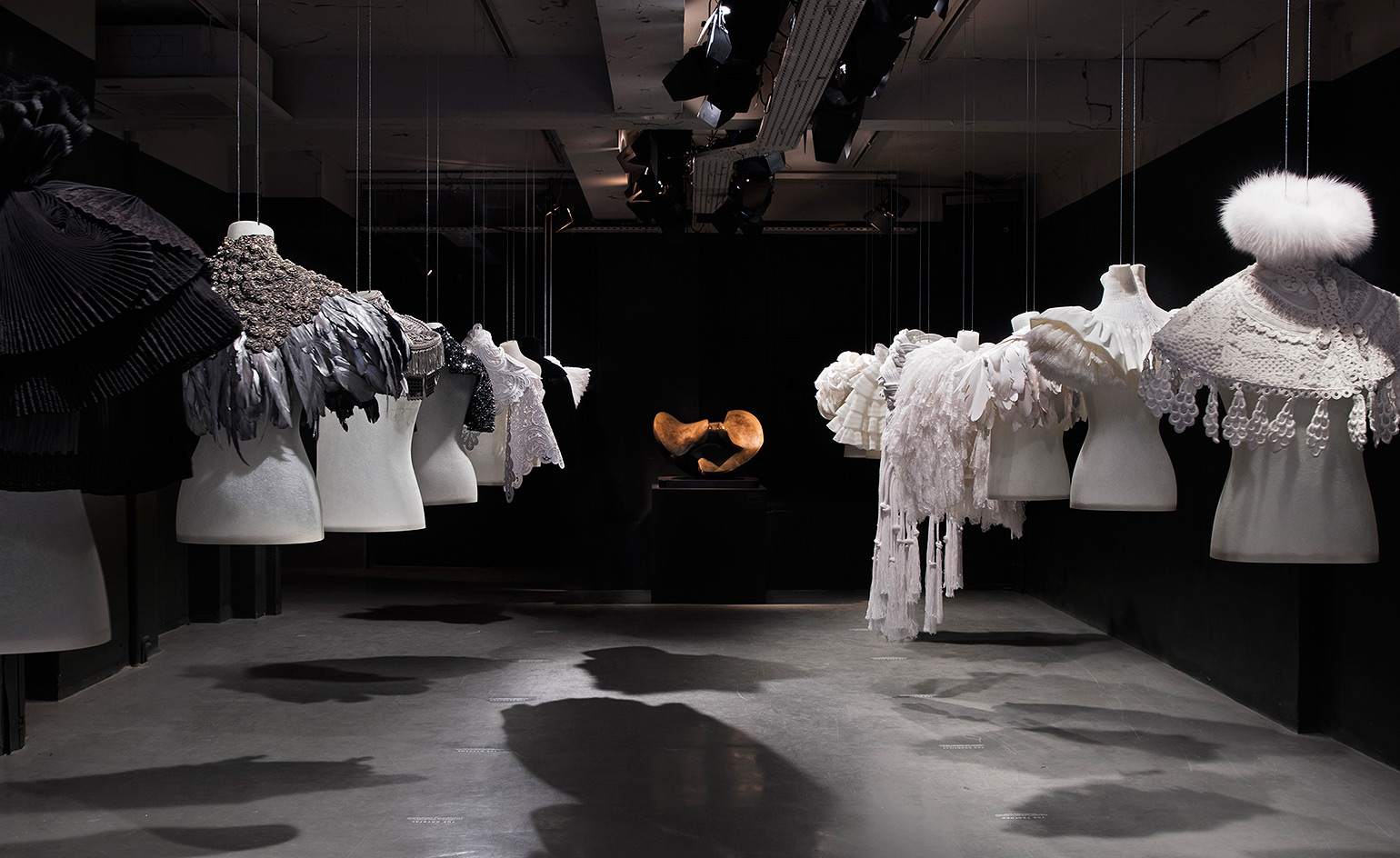
In the 20th century, Henry Moore attempted to define the body more than any other artist, visualising its form in magnificent bronze sculptures, shapes that are now synonymous with modern British culture. Moore’s vision was distinctive: feminine forms that were both classic and modern, larger-than-life, and characterised by their complex, concave surfaces with sensuously scooped-out voids.
Now, the work of the foremost sculptor of the British body is the inspiration for clothing made to hang on it, serving as the springboard for Burberry’s freshly launched collection. The process, design references, and final pieces from the collection, shown earlier this week during London Fashion Week, are now on view at Makers House as part of the fashion house’s exhibition, ‘Henry Moore: Inspiration & Process’, alongside more than 40 sculptures by Moore, including Mother and Child: Block Seat (1983–84), Draped Reclining Mother and Baby (1983).
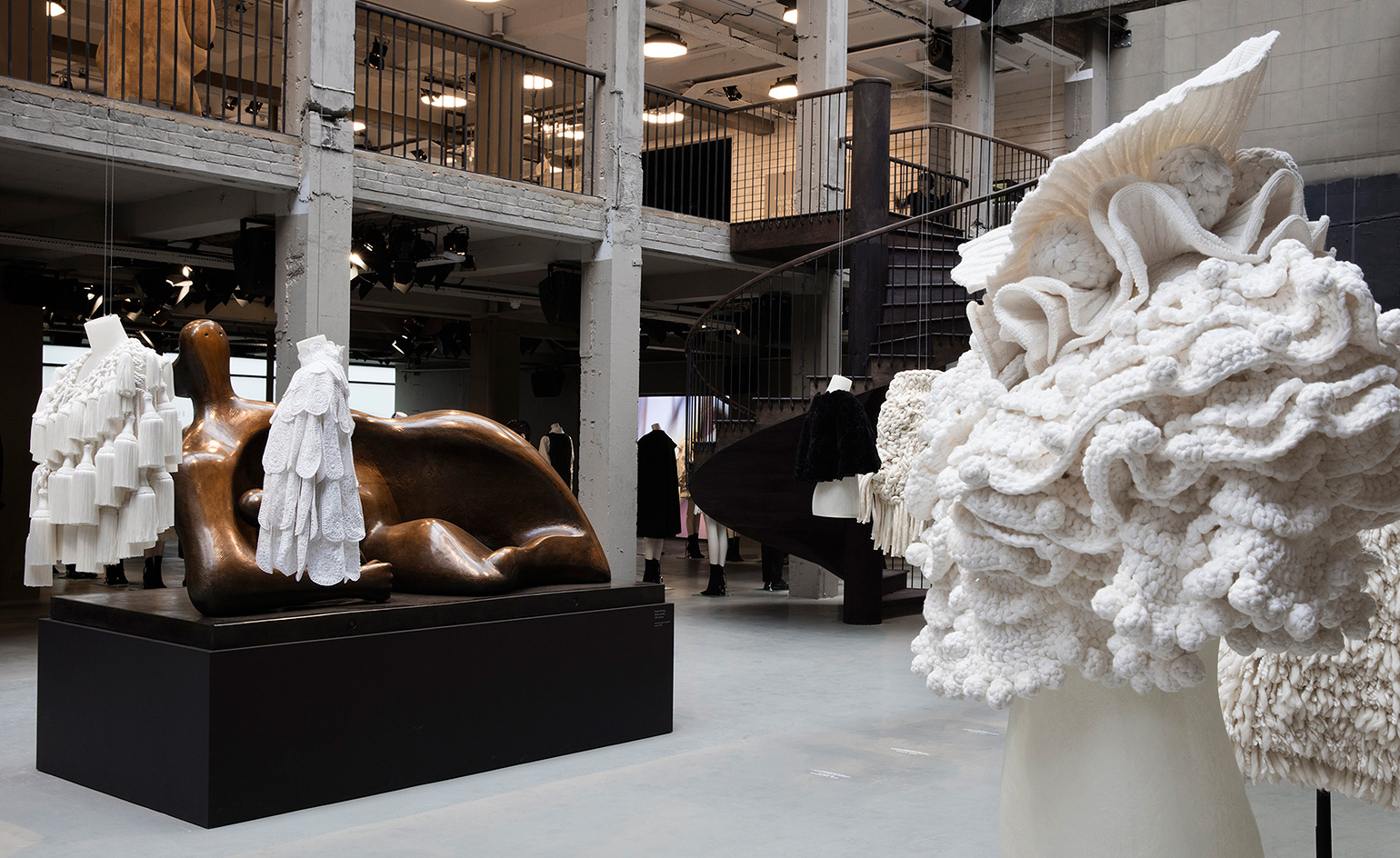
Installation view of ‘Henry Moore: Inspiration & Process’ at Makers House
For Moore, imagining the body was about more than addressing the human form – it also absorbed the British landscape. Moore’s sculptures share a serendipitous connection with Burberry: Yorkshire. It’s often pointed out that the artist’s curvaceous, undulating lines relate to the hills in the county. This is also the manufacturing home of Burberry’s iconic trench coat, and the birthplace of chief creative and chief executive officer Christopher Bailey, who has long been fascinated by Moore’s creations.
‘We are delighted to be returning to Makers House this month,’ Bailey explains. ‘This time, we are incredibly privileged to be working alongside the Henry Moore Foundation to bring our collection and exhibition of Moore’s work to life.’ The results of Burberry’s extensive collaboration with the foundation – which celebrates its 40th anniversary this year – are reflected in the silhouettes and fabrications of its February 2017 collection, and emphasised in Burberry’s new campaign, shot in the gardens of Moore’s former home and studio in Perry Green, Hertfordshire.
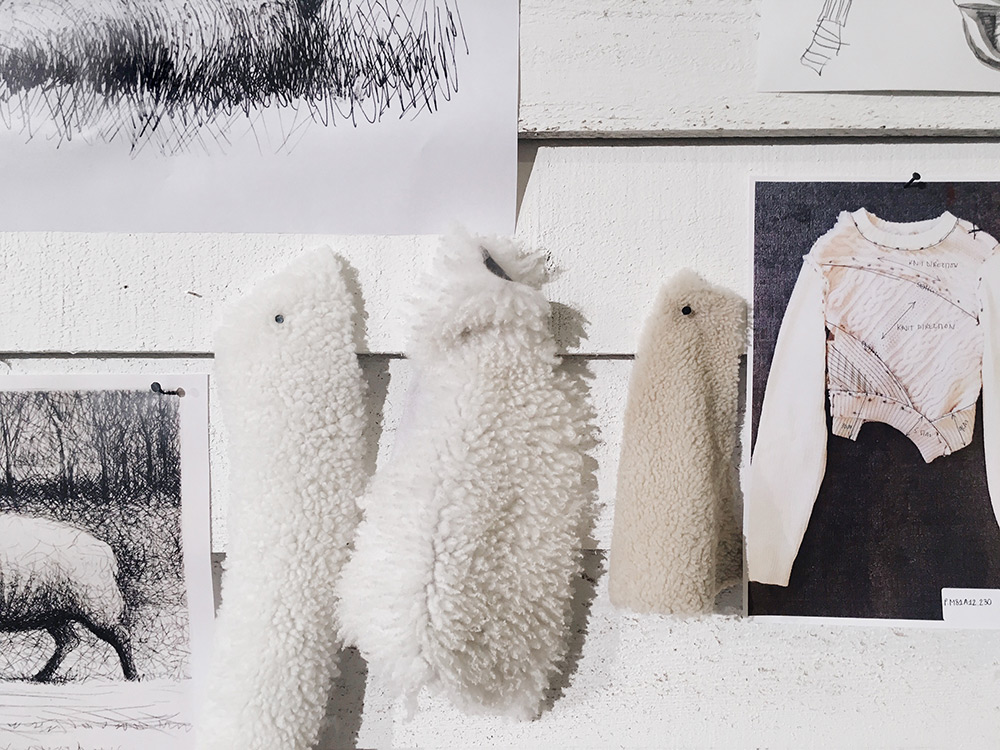
Selection of materials and sketches with examples of Moore's graphic works.
Bailey’s translation of Moore’s asymmetric forms, for example, his Torso with Point (1967), is seen in the hemlines of dresses and sweaters, while his series of intricately formed made-to-order capes in monochromatic white tones, reflect the sculptor’s studies of soft, sweeping shoulder lines. A chunky, cable-knit jumper with a funnel-neck, recalls Moore’s Seated Woman: Thin Neck (1961), while a nude dress with cut-outs at the waist and shoulder echoes the artist’s presentation of hollowed out silhouettes.
Just as Moore experimented with oversized forms in clay, wood, bronze and plaster on different scales, texture and materials remain consistently important to Bailey’s vision for Burberry. The see-now-buy-now collection features undulating ruffles, billowing silks and crisp cottons, and a new tropical gabardine, a lighter version of the brand’s signature fabrication.
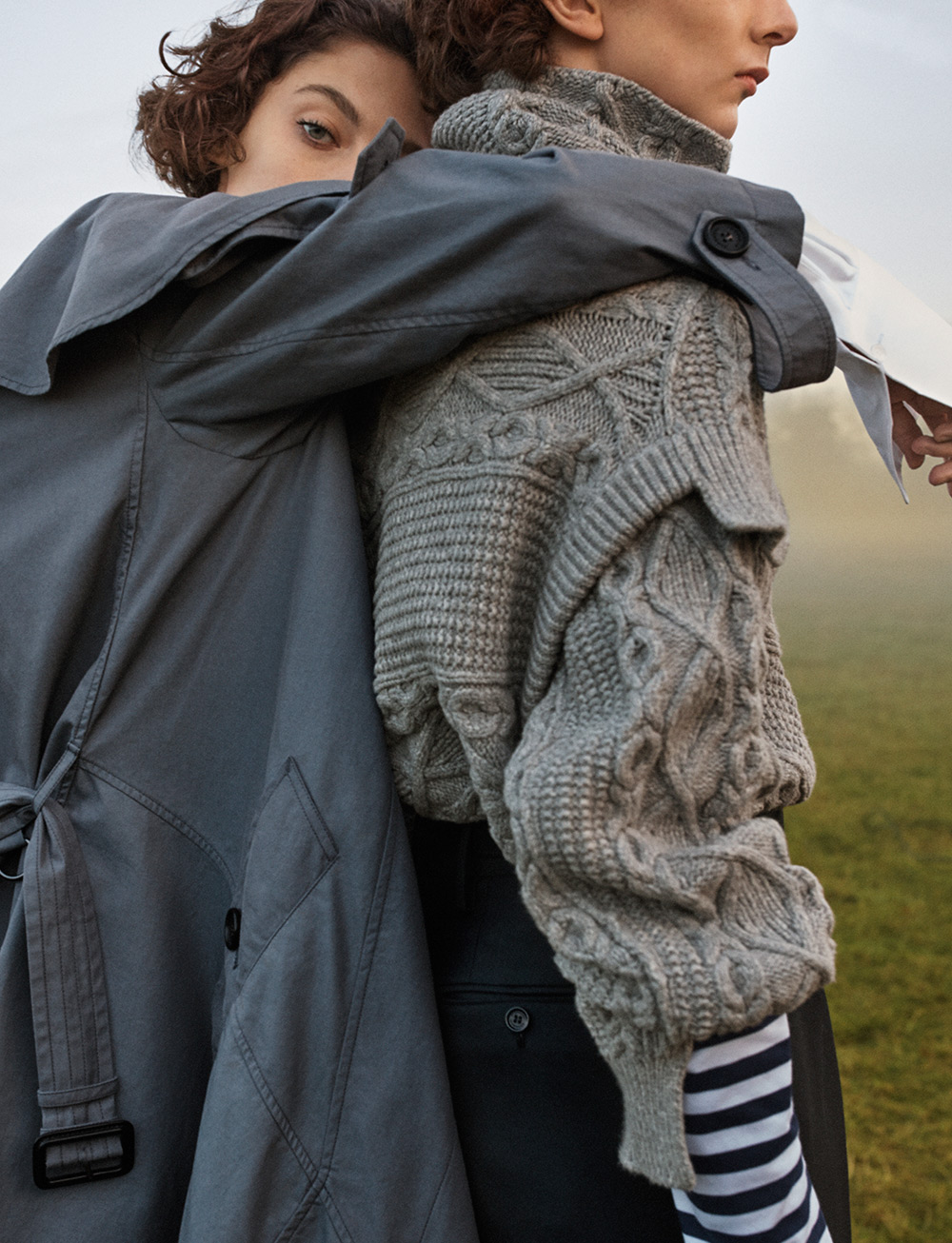
Burberry's February 2017 collection campaign. Courtesy of Burberry.
The juxtaposition of Burberry’s designs with Moore, of course, is intended to place the brand in a lineage of British culture, and this is a place that it deserves. Outfitting explorers and the military with its revolutionary protective styles, the brand has shaped the British body since the mid-19th century.
‘I feel sure that Henry Moore would have been fascinated to see his work inspiring such outstanding designs,’ says Henry Moore Foundation director Godfrey Worsdale. ‘We hope this collection will encourage new audiences to discover and appreciate his remarkable work and the studios he created them in.’
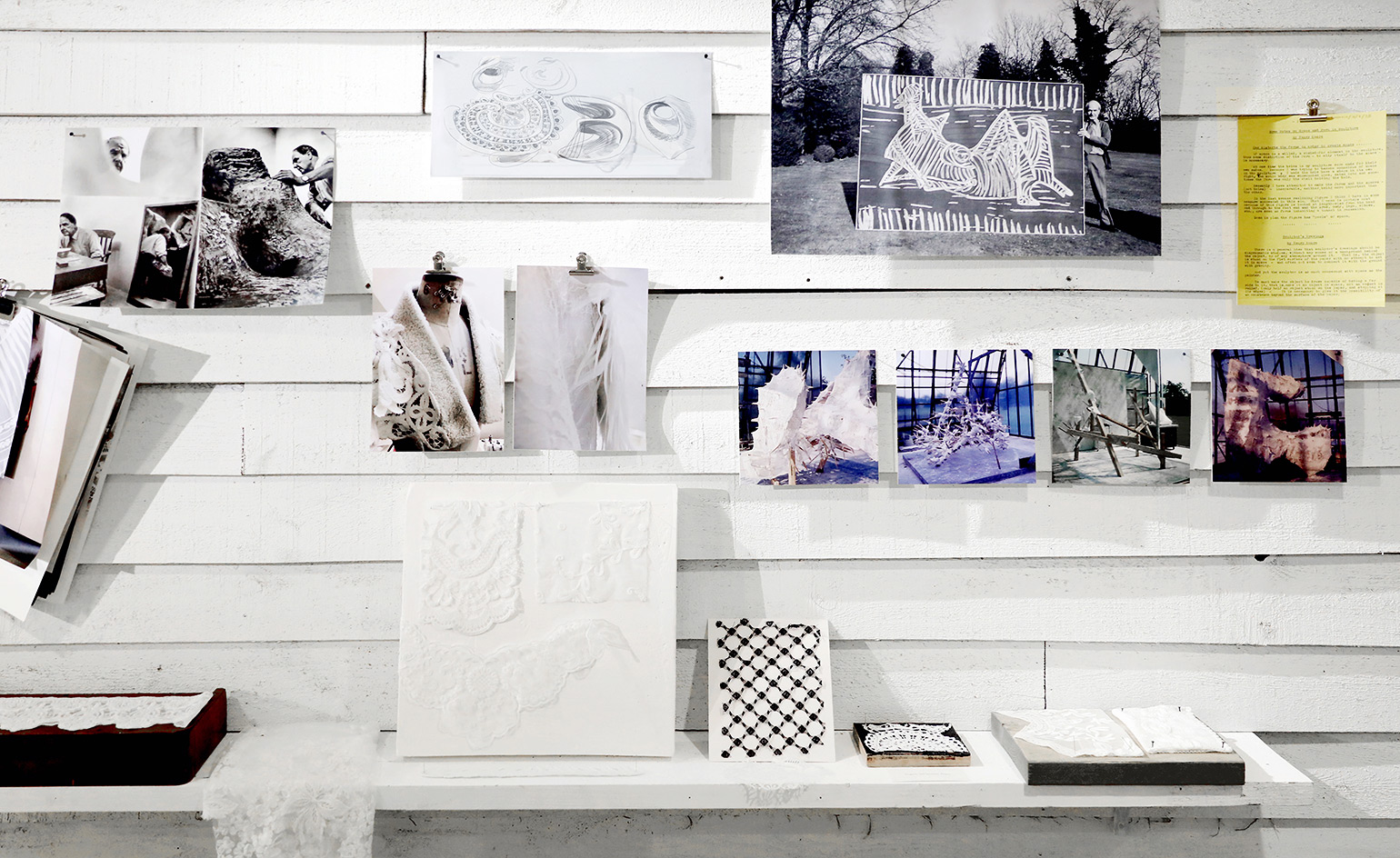
The British fashion house’s February 2017 collection inspiration wall, featuring archival material from the Henry Moore Foundation
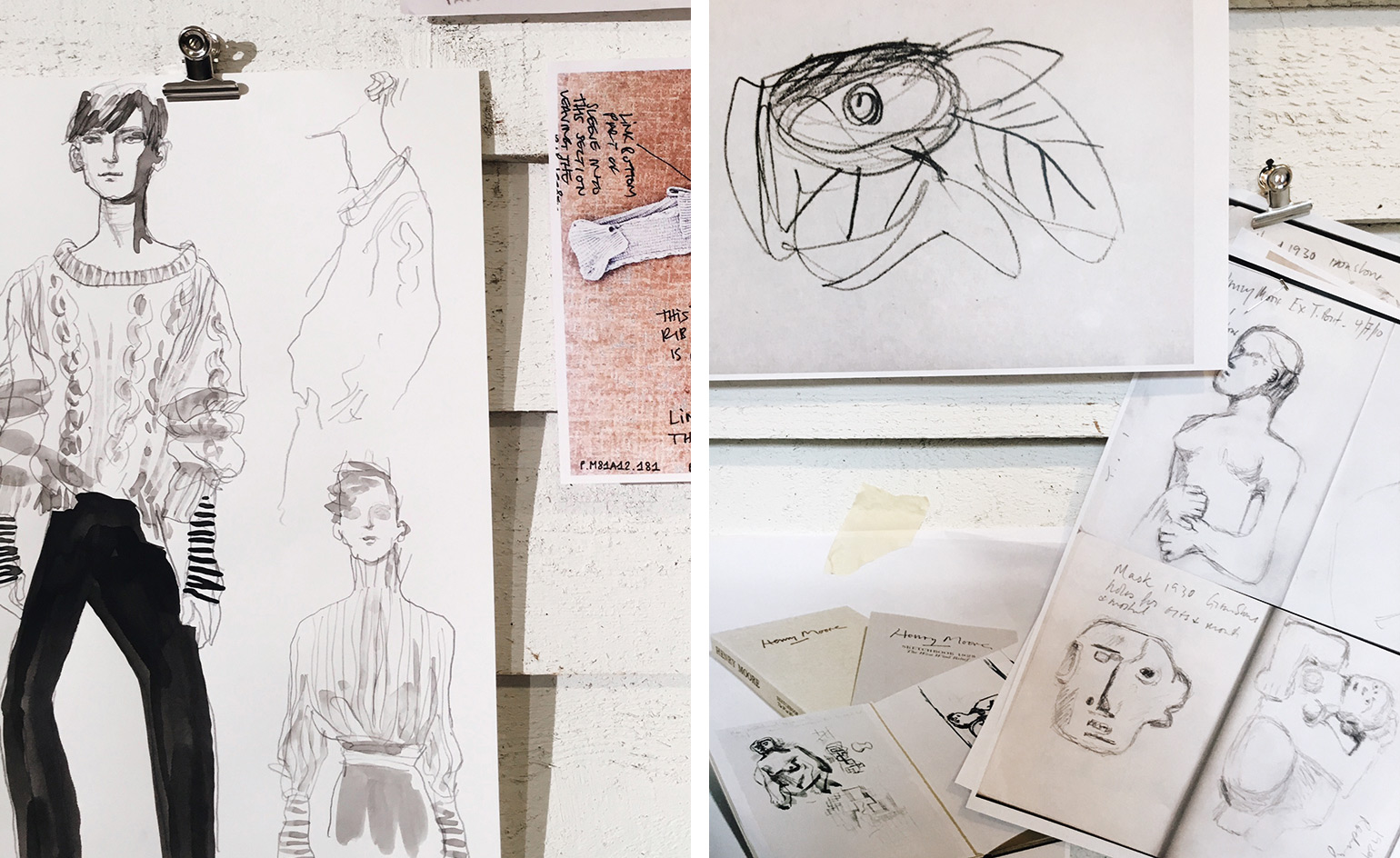
Left, sketches of Burberry’s latest collection. Right, sketches with reproductions of Moore’s drawings and graphic works.
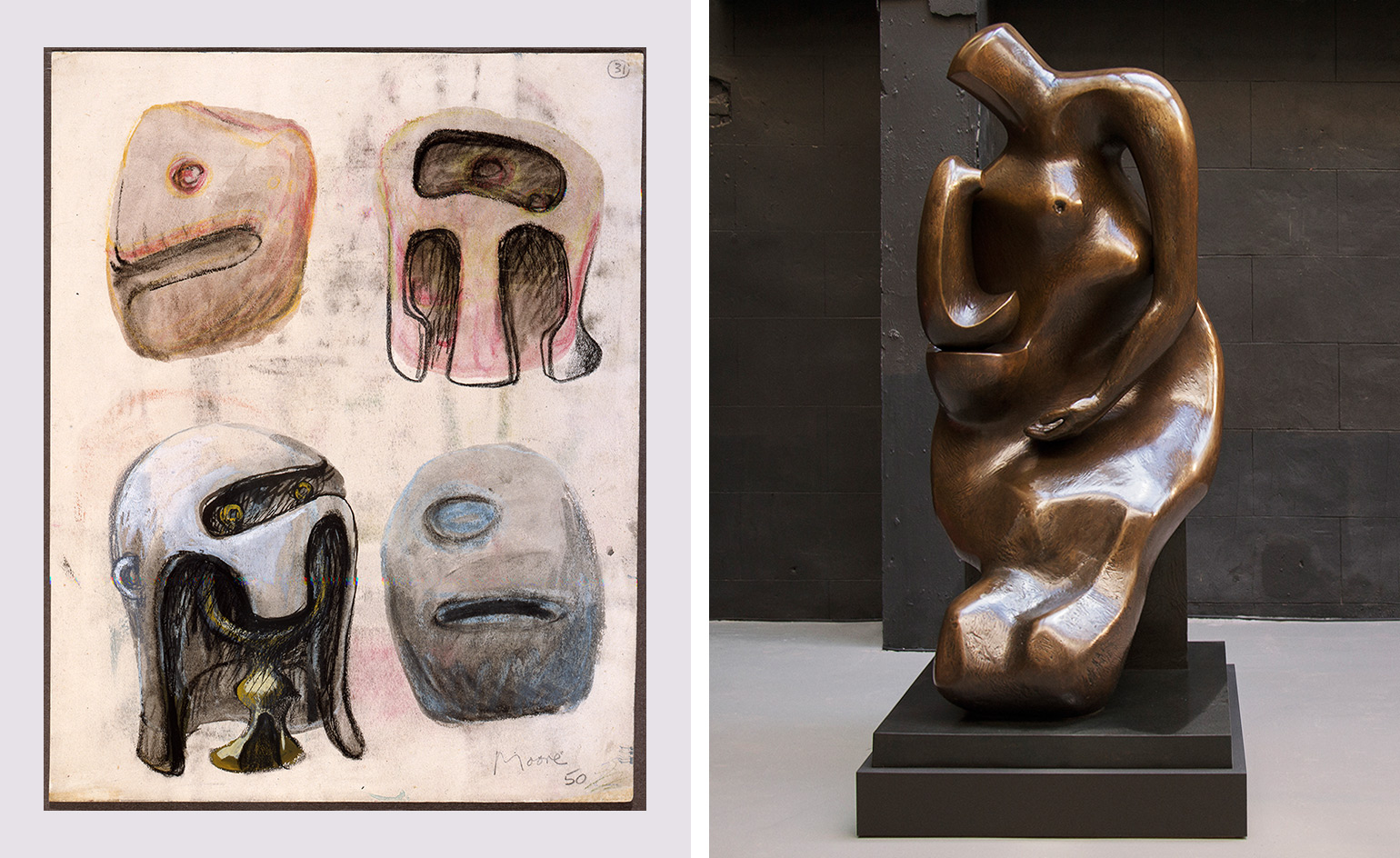
Helmet Heads (left), by Henry Moore, 1950-51; and installation view of Mother and Child: Block Seat, 1983–84 at Makers House
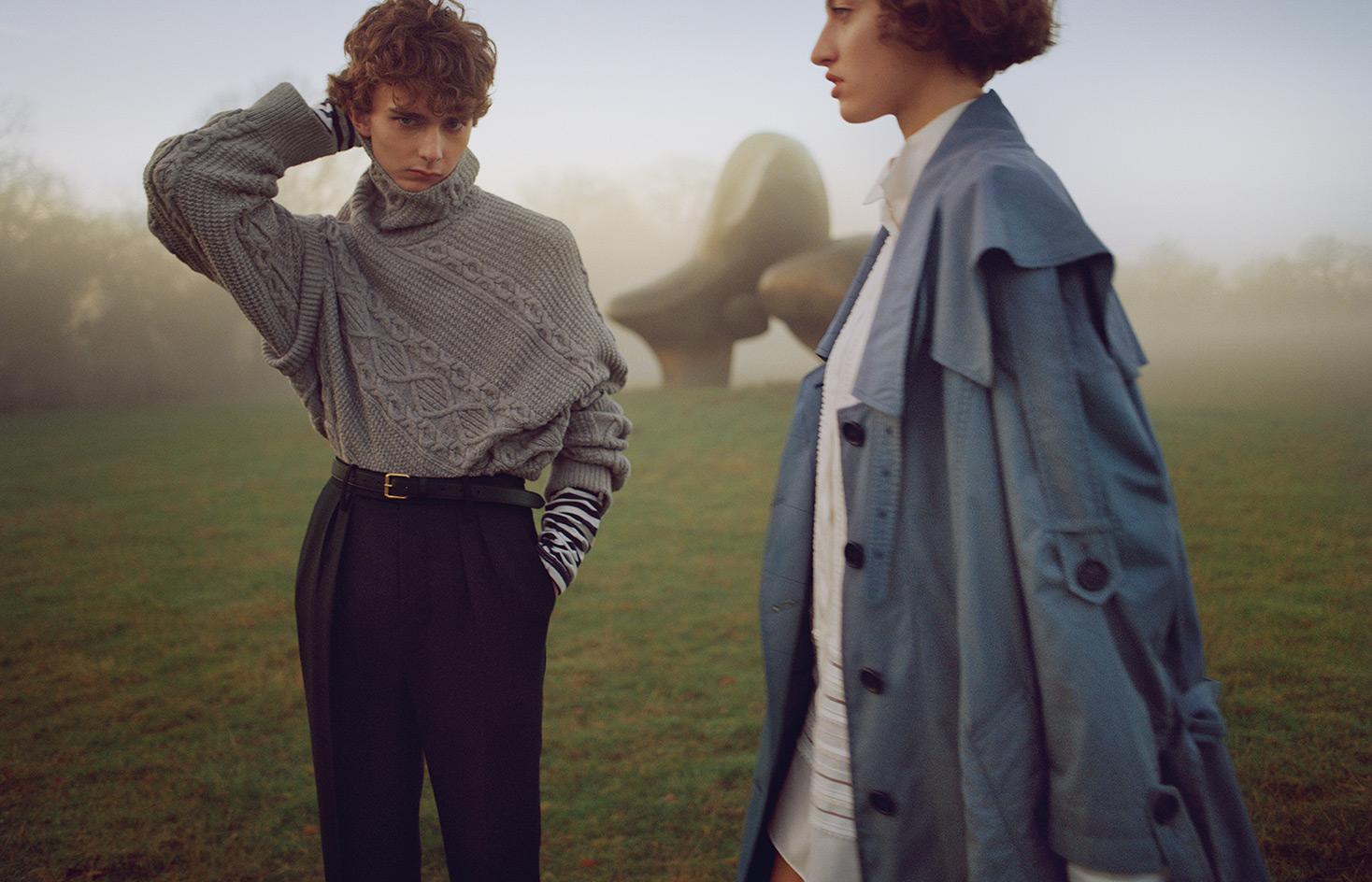
Burberry's February 2017 campaign was shot in the gardens of Moore’s former home and studio in Perry Green, Hertfordshire. Courtesy of Burberry.
INFORMATION
‘Henry Moore: Inspiration & Process’ is on view until 27 February. For more information, visit the Burberry website and the Henry Moore Foundation website
ADDRESS
Receive our daily digest of inspiration, escapism and design stories from around the world direct to your inbox.
Makers House
1 Manette St
London W1D 4AT
Charlotte Jansen is a journalist and the author of two books on photography, Girl on Girl (2017) and Photography Now (2021). She is commissioning editor at Elephant magazine and has written on contemporary art and culture for The Guardian, the Financial Times, ELLE, the British Journal of Photography, Frieze and Artsy. Jansen is also presenter of Dior Talks podcast series, The Female Gaze.
-
 This modern Clapham house is nestled indulgently into its garden
This modern Clapham house is nestled indulgently into its gardenA Clapham house keeps a low profile in South London, at once merging with its environment and making a bold, modern statement; we revisit a story from the Wallpaper* archives
-
 The new Tudor Ranger watches master perfectly executed simplicity
The new Tudor Ranger watches master perfectly executed simplicityThe Tudor Ranger watches look back to the 1960s for a clean and legible design
-
 This late-night hangout brings back 1970s glam to LA’s Sunset Boulevard
This late-night hangout brings back 1970s glam to LA’s Sunset BoulevardGalerie On Sunset is primed for strong drinks, shared plates, live music, and long nights
-
 ‘Architect of glamour’ Antony Price makes a high-voltage return to the runway with 16Arlington
‘Architect of glamour’ Antony Price makes a high-voltage return to the runway with 16ArlingtonFeaturing a runway debut from Lily Allen, the show saw legendary designer Antony Price – best known for outfitting Roxy Music in the 1980s – unite with 16Arlington’s Marco Capaldo on the sensual after-dark collection
-
 ‘Dirty Looks’ at the Barbican explores how fashion designers have found beauty in dirt and decay
‘Dirty Looks’ at the Barbican explores how fashion designers have found beauty in dirt and decayFrom garments buried in River Thames mud to those torn, creased and stained, ‘Dirty Looks’ is a testament to how ‘creativity and new artistic practices can come out of decay’, its curators tell Dal Chodha
-
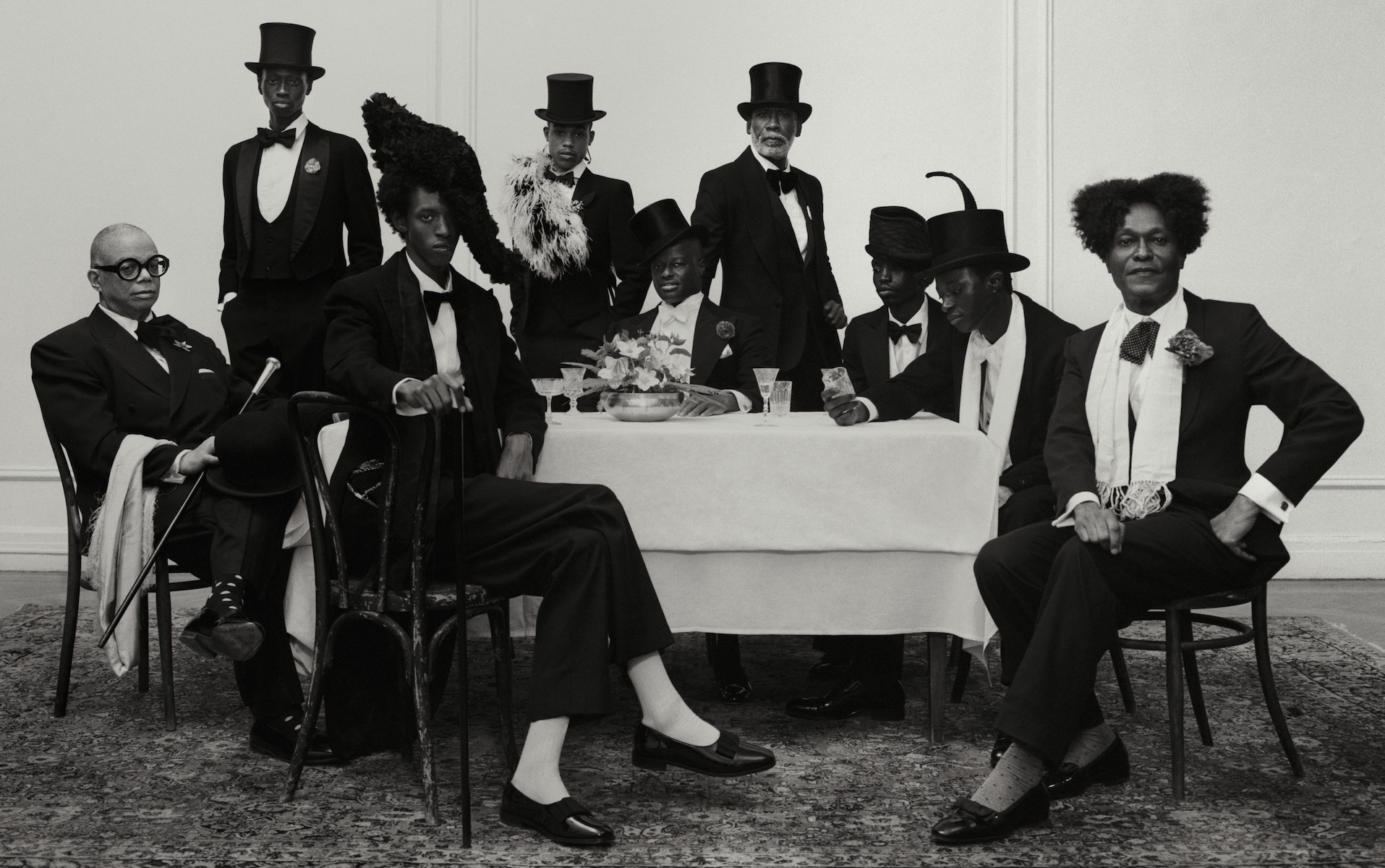 Tyler Mitchell’s London show explores the figure of the Black Dandy, ‘imagining what else masculinity could look like’
Tyler Mitchell’s London show explores the figure of the Black Dandy, ‘imagining what else masculinity could look like’Originally part of a visual essay to accompany the Met’s ‘Superfine’ 2025 Costume Institute exhibition, ‘Portrait of the Modern Dandy’ goes on display at Gagosian Burlington Arcade in London this week
-
 Inside Louis Vuitton’s Murakami London pop-up, a colourful cartoon wonderland with one-of-a-kind café
Inside Louis Vuitton’s Murakami London pop-up, a colourful cartoon wonderland with one-of-a-kind caféWallpaper* takes a tour of the Louis Vuitton x Murakami pop-up in London’s Soho, which celebrates the launch of a new ‘re-edition’ accessories collection spanning the greatest hits from the Japanese artist’s long-running collaboration with the house
-
 Get to know Issey Miyake’s innovative A-POC ABLE line as it arrives in the UK
Get to know Issey Miyake’s innovative A-POC ABLE line as it arrives in the UKAs A-POC ABLE Issey Miyake launches in London this week, designer Yoshiyuki Miyamae gives Wallpaper* the lowdown on the experimental Issey Miyake offshoot
-
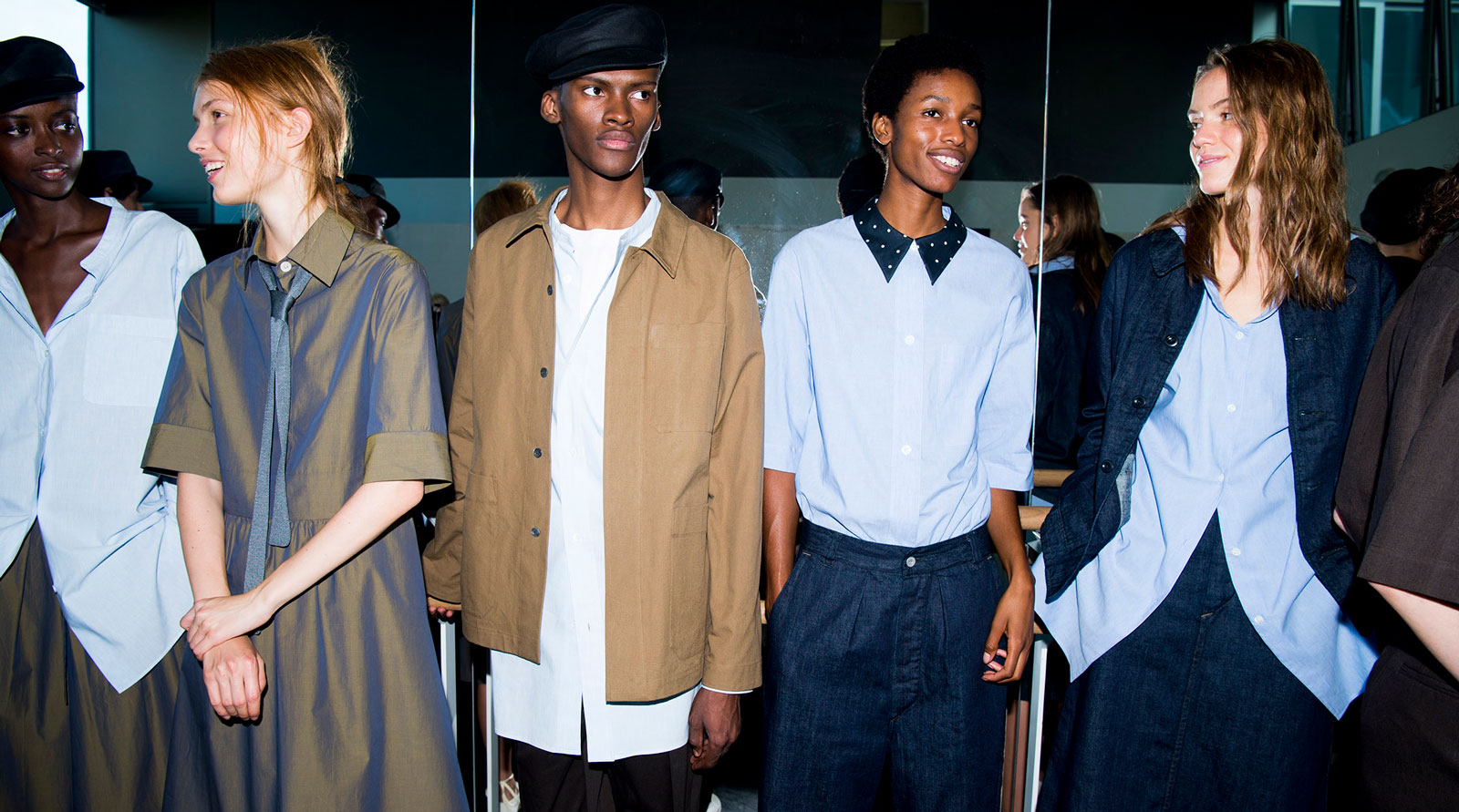 Margaret Howell London Fashion Week Women's S/S 2019
Margaret Howell London Fashion Week Women's S/S 2019 -
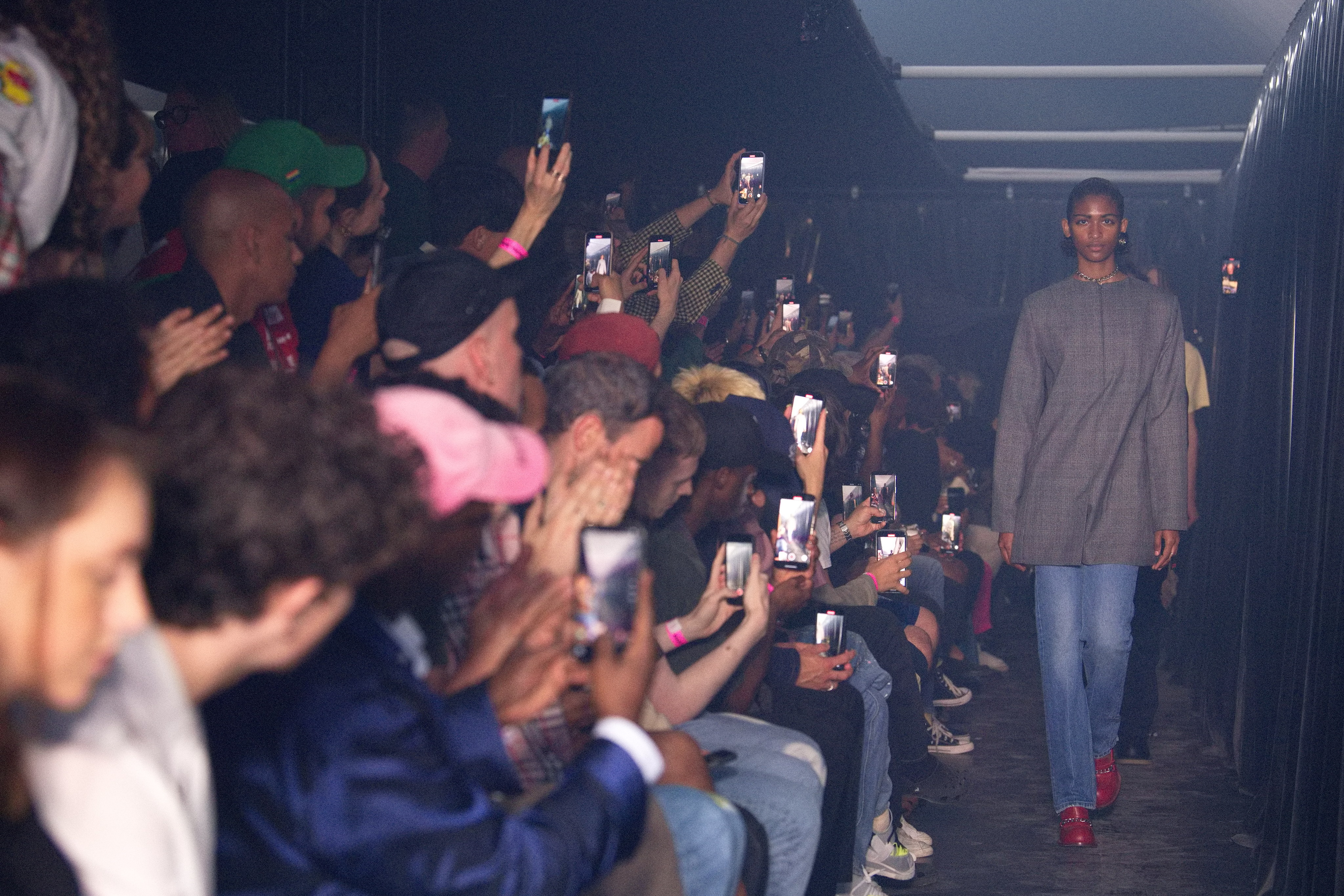 London Fashion Week S/S 2023: Ahluwalia to Martine Rose
London Fashion Week S/S 2023: Ahluwalia to Martine RoseThough slimmed-down, London Fashion Week nonetheless provided the moments of creative expression the city is known for – from Ahluwalia’s ode to Africa to Martine Rose’s much-anticipated runway return
-
 Discover these fashion brands at London Craft Week
Discover these fashion brands at London Craft WeekDuring London Craft Week, fashion brands including Smythson, Bally and Serapian are hosting events across the capital